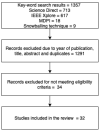A Systematic Review of In-Vehicle Physiological Indices and Sensor Technology for Driver Mental Workload Monitoring
- PMID: 36850812
- PMCID: PMC9963326
- DOI: 10.3390/s23042214
A Systematic Review of In-Vehicle Physiological Indices and Sensor Technology for Driver Mental Workload Monitoring
Abstract
The concept of vehicle automation ceases to seem futuristic with the current advancement of the automotive industry. With the introduction of conditional automated vehicles, drivers are no longer expected to focus only on driving activities but are still required to stay alert to resume control. However, fluctuations in driving demands are known to alter the driver's mental workload (MWL), which might affect the driver's vehicle take-over capabilities. Driver mental workload can be specified as the driver's capacity for information processing for task performance. This paper summarizes the literature that relates to analysing driver mental workload through various in-vehicle physiological sensors focusing on cardiovascular and respiratory measures. The review highlights the type of study, hardware, method of analysis, test variable, and results of studies that have used physiological indices for MWL analysis in the automotive context.
Keywords: HR; HRV; conditional automation; mental workload; respiration.
Conflict of interest statement
The authors declare no conflict of interest.
Figures
References
-
- On-Road Automated Driving (ORAD) Committee . Taxonomy and Definitions for Terms Related to On-Road Motor Vehicle Automated Driving Systems. SAE International; Warrendale, PA, USA: 2014.
-
- Waard D. The Measurement of Drivers’ Mental Workload. Rijksuniv; Groningen, The Netherlands: 1996.
-
- Stanton N.A., editor. Handbook of Human Factors and Ergonomics Methods. CRC Press; Boca Raton, FL, USA: 2005.
Publication types
MeSH terms
Grants and funding
LinkOut - more resources
Full Text Sources




